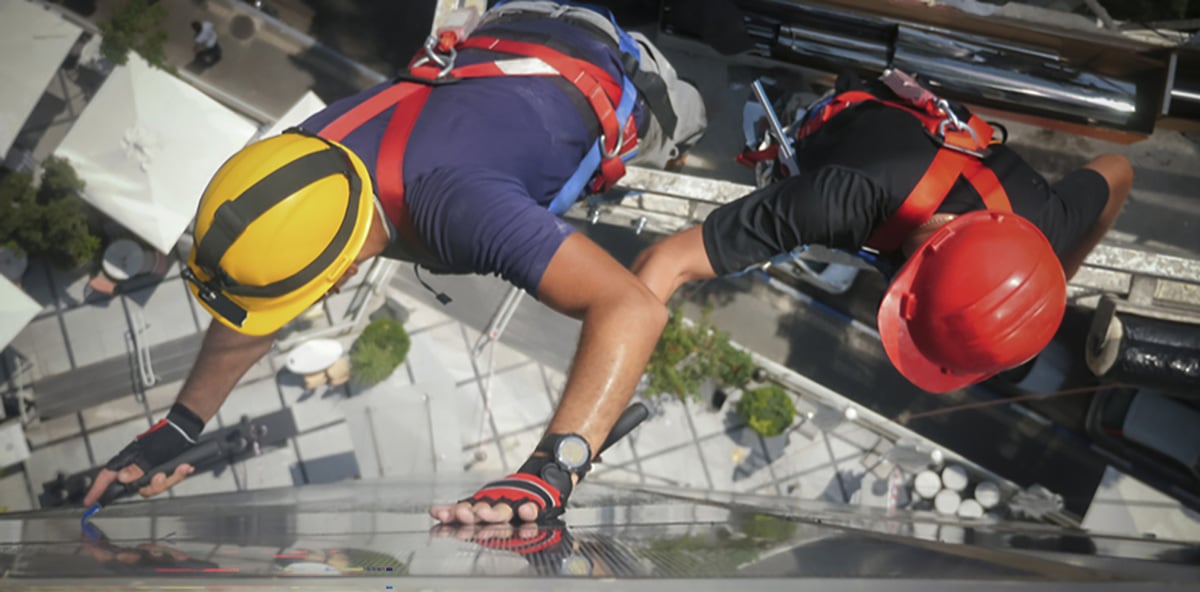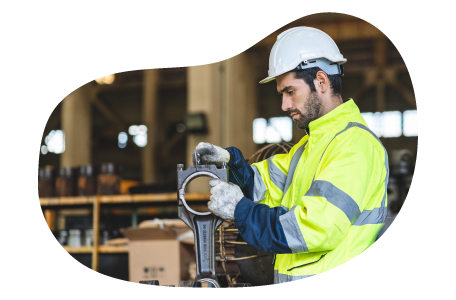6 tips to prevent struck-by-object accidents in the workplace

No matter how vigilant you are about trying to maintain a safe workplace, injuries on the job can still happen, and more often than not, such accidents fall under the category of “struck by object.” Struck-by-object injuries involve a worker being hit by any piece of equipment or object that’s falling, swinging, or rolling, including a moving vehicle. This type of injury is one of the Occupational Safety and Health Administration’s (OSHA) “fatal four” hazards.
For instance, if equipment falls off a shelf in a storage space and injures an employee, or if a construction worker drops a sledgehammer on his foot, it would be considered a struck-by-object injury. These accidents can result in time away from work and prolonged medical treatment, and the most serious cases could be fatal.
Struck-by-object injuries involve a worker being hit by any piece of equipment or object that’s falling, swinging, or rolling, including a moving vehicle.
To help protect your employees and business in case an accident does happen, it's important to develop effective risk management practices and maintain the right insurance coverage.
How to protect your small business from struck-by-object accidents
Taking the following measures can be instrumental in making your workplace safe and reducing the risk of struck-by-object incidents at your business.
Provide safety eyewear
If employees are using tools that have the potential to create flying particles or dust, they should wear proper protective eyewear, such as goggles, safety glasses, or face shields. Many struck-by injuries are the result of chemicals or particles that can damage a person’s eye. Require workers to wear protective eyewear if any such hazards exist at your workplace.
Enforce hardhats at work sites
If there is work being done above (such as on scaffolding), anyone who is in the area – both employees and visitors – should wear hardhats. Routinely inspect hardhats for dents, cracks, or signs of age. Hardhats that are showing signs of wear and tear won’t be as effective and should be removed from use immediately.
Ensure workers are highly visible
Employees who are working in high-risk zones, such as construction sites or parking lots, should be highly visible at all times, particularly if they’re operating heavy machinery. Require workers who are at risk for on-the-job accidents to wear bright gear or reflective vests. Make sure that high-visibility safety apparel can be seen under any lighting conditions, especially at night.
Lower blades and lock moving parts of machines when not in use
When potentially hazardous equipment isn’t in use, make sure that it’s secured. Lower blades and lock moving parts of bulldozers, loaders, and similar machines when they’re being repaired or not being used. Have employees attend regular safety training sessions to ensure they know how to secure machinery properly.
Inspect tools and equipment
Regularly inspect tools and equipment to make sure they’re in proper working order and in safe condition. Check for defects, and take them out of service if any weak spots are found. Examine protective guards and components to ensure they’re in good condition and will protect workers from moving parts.
Limit access to work areas
Accidents are more likely to happen to workers who haven’t been adequately educated on workplace safety protocols. Ideally, only those who are essential to a project and who have been trained in safety procedures should be allowed to enter a work area. If workers aren’t aware of the dangers, they shouldn’t be allowed onto the site.

Work safety resources
Several work safety resources exist online to help business owners prevent injuries at their workplaces. Consider using the Occupational Safety and Health Administration’s Compliance Assistance Quick Start tool to research the safety regulations you should be following. Also, check out the National Safety Council’s Workplace Safety Training for information on how to make your business safer.
Get quotes from trusted carriers with Insureon
Complete Insureon’s easy online application today to compare insurance quotes from top-rated U.S. carriers. Once you find the right policy for your small business, you can begin coverage in less than 24 hours.
Desiree DeNunzio, Contributing Writer
Desiree is a writer and editor with a passion for bringing relevant content to readers. She's edited and written content for online and print publications such as Wired magazine, PCWorld, CNET News, and more.







